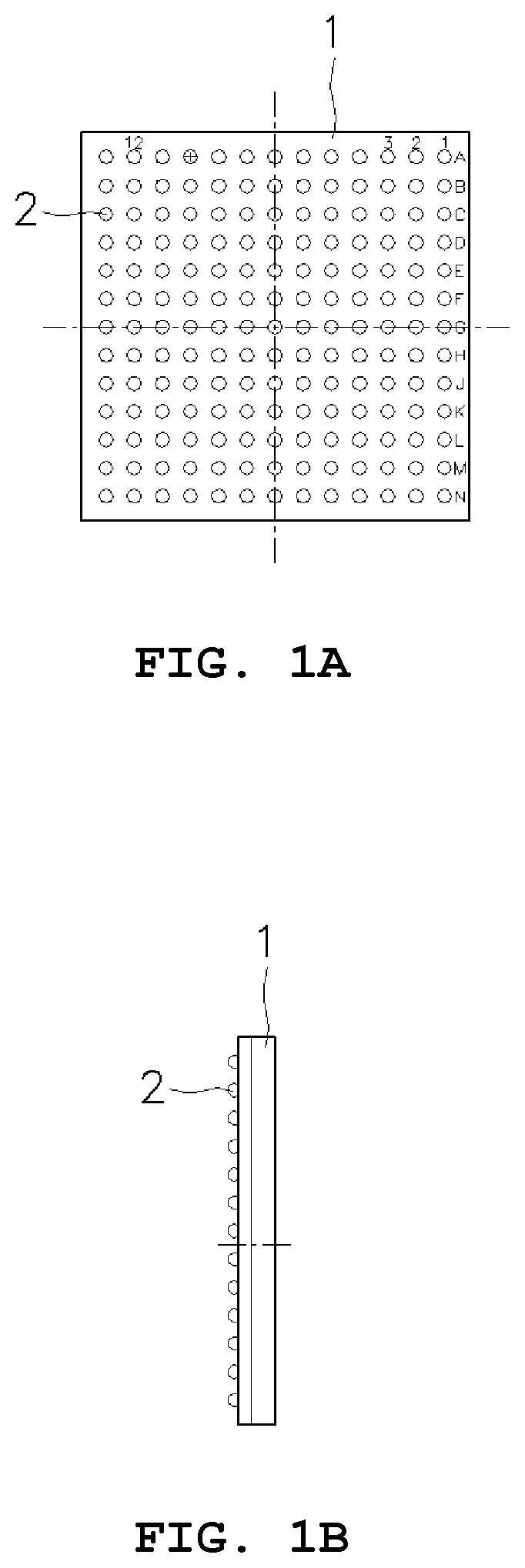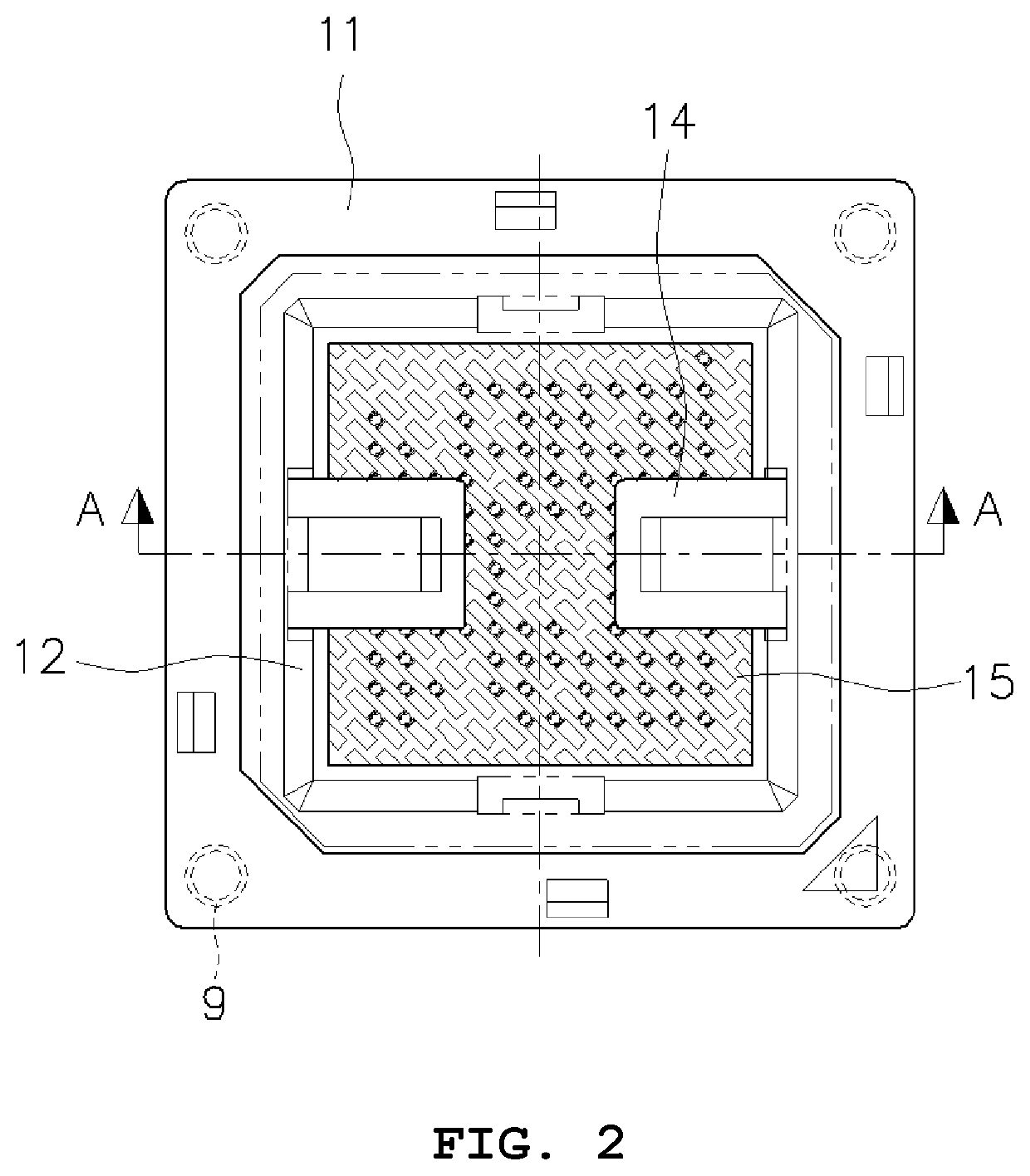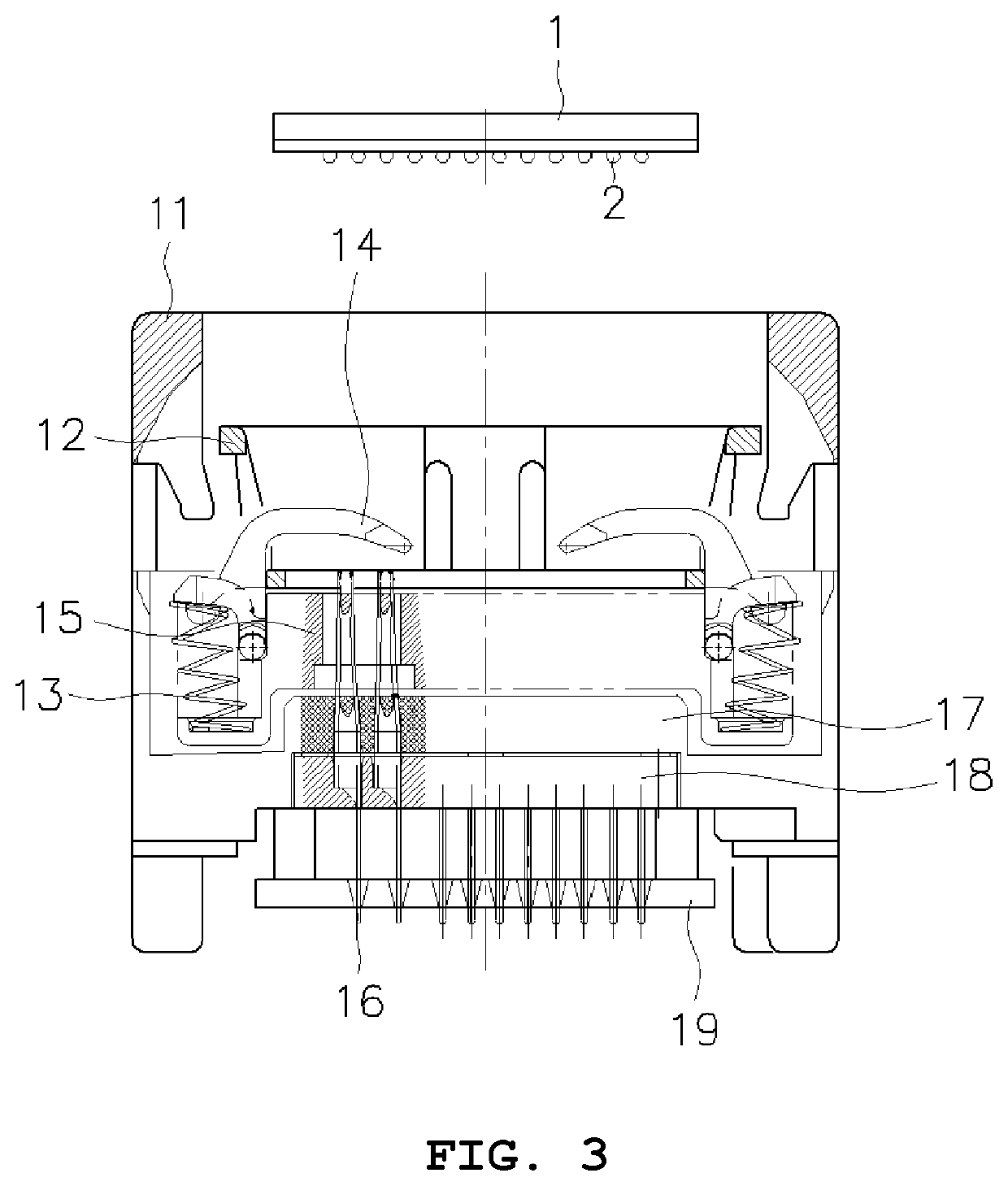Contact and socket device for burning-in and testing semiconductor IC
a socket device and contact technology, applied in semiconductor/solid-state device testing/measurement, semiconductor operation lifetime testing, instruments, etc., can solve the problems of high manufacturing cost, high assembly time, and inefficient air flow, so as to reduce the height reduce the size of the socket device, and increase space efficiency
- Summary
- Abstract
- Description
- Claims
- Application Information
AI Technical Summary
Benefits of technology
Problems solved by technology
Method used
Image
Examples
first embodiment
[0102]FIG. 6 is a top plan view of a socket device according to the present disclosure; FIG. 7 is a sectional view taken along line B-B of FIG. 6; and FIG. 8 is a cross-sectional view taken along line C-C of FIG. 6.
[0103]Referring to FIGS. 6 to 8, the socket device 200 for testing a semiconductor IC according to the embodiment includes: contacts 110; a main body part 210 having first receiving holes 211 formed therein and a plurality of mounting parts 212 fixed to a PCB, wherein each of the first receiving holes allows an upper end of each of the contacts 110 to be inserted therethrough and allows the contact to be compressed and moved downward; a lower plate 220 assembled with a lower end of the main body part 210 and having a second receiving hole 221 formed at a position corresponding to the first receiving hole 211, the second receiving hole allowing a lower terminal part 122 of the contact 110 to be inserted therethrough; a floating plate 230 having a contact hole 231 formed at...
third embodiment
[0130]FIG. 14 is a perspective view of the contact according to the present disclosure.
[0131]Referring to FIG. 14, a contact 130 of the third embodiment is composed of an upper terminal part 131; a lower terminal part 132; and an elastic part 133a and 133b, and is substantially the same as the contact of the first embodiment. Particularly, the upper terminal part 131 may be formed to have a cylindrical shape by rolling and bending the plate, and includes an upper tip part 131b having a plurality of contact points configured as a crown shape formed by pointedly protruding along the circumference of the upper end part of the upper terminal part.
[0132]Meanwhile, in the embodiment, only the upper terminal part is illustrated to have a cylindrical shape, but the lower terminal part may be also configured to have a cylindrical shape according to the shape of the terminal (a pad) of the PCB.
[0133]FIG. 15 is a perspective view of a contact according to a fourth embodiment of the present dis...
fifth embodiment
[0136]Referring to FIGS. 16A, 16B, and 16C, a contact 150 of the fifth embodiment includes an upper terminal part 151 having an upper tip part 151b at an upper end part thereof; a lower terminal part 152 having a lower tip part 152b at a lower end part thereof and being assembled with the upper terminal part 151 by crossing each other in a longitudinal direction of the contact; and a spring 153 fitted over the upper terminal part 151 and the lower terminal part 152 therebetween and elastically supporting the upper terminal part 151 and the lower terminal part 152.
[0137]Each of the upper terminal part 151 and the lower terminal part 152 has the same shape, and is formed to have a thickness of a plate in a longitudinal direction thereof. The upper terminal part 151 and the lower terminal part 152 have a first slot 151c and a second slot 152c, respectively, formed therein, and are inserted into the spring 153 by crossing each other by 90° to be assembled with each other.
[0138]As illust...
PUM
| Property | Measurement | Unit |
|---|---|---|
| width | aaaaa | aaaaa |
| thickness | aaaaa | aaaaa |
| elastic | aaaaa | aaaaa |
Abstract
Description
Claims
Application Information
 Login to View More
Login to View More - R&D
- Intellectual Property
- Life Sciences
- Materials
- Tech Scout
- Unparalleled Data Quality
- Higher Quality Content
- 60% Fewer Hallucinations
Browse by: Latest US Patents, China's latest patents, Technical Efficacy Thesaurus, Application Domain, Technology Topic, Popular Technical Reports.
© 2025 PatSnap. All rights reserved.Legal|Privacy policy|Modern Slavery Act Transparency Statement|Sitemap|About US| Contact US: help@patsnap.com



